Working for the King’s Foundation is no ordinary job. To do it, explains the charity’s media spokesperson Alex Schweitzer-Thompson, you have to “buy into” His Majesty’s lofty mission to “promote harmony with nature, to improve the well-being of people and the planet”, as its financial accounts describe it.
The foundation does this by teaching traditional heritage skills that have been cut from many further education and training budgets elsewhere.
Since being established 35 years ago, the charity has taught more than 115,000 students, mainly at the King’s heritage estates of Highgrove House in Gloucestershire and Dumfries House and the Castle of Mey in Scotland, with courses ranging from lacemaking and millinery to furniture-making and farming.
It’s easy to be cynical about its utopian vision of ‘harmony’, which seems a far cry from the world we live in.
“A lot of people would say that it’s very idealistic,” Schweitzer-Thompson admits. “Until you see it in practice, it’s easy to think it’s pie in the sky – that an educator can’t do that and get the results that industry needs.
“But a lot of what we do is almost disproving other people and showing that there is another way.”
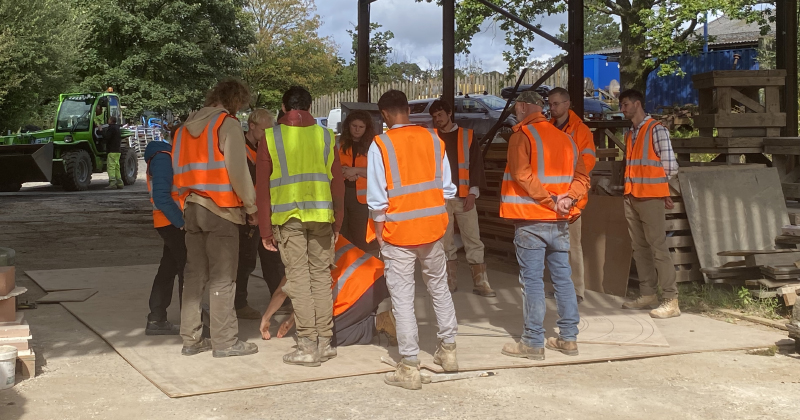
Fanciful creations
We’re sitting in Schweitzer-Thompson’s car, driving across the sprawling 2,000-acre Dumfries House estate in Ayrshire that is the foundation’s headquarters, to meet students on its latest building crafts programme.
The group of eight have been tasked with designing and building an ornamental nature observation tower (“they’re not allowed to call it a bird hide, as the estate already has one”) during the course of their eight-month programme. The design they settle on will need to be approved by King Charles himself.
As they discuss what it could look like, each student suggests ideas based on their skill sets: some have basic experience as stonemasons, one is a thatcher and another a timber framer. The beauty of the collaboration is that they learn from one another’s disciplines, explains their teacher Charles, as “quite often, one skill feeds into another”.
Seeing them in action provides a poignant reminder of what construction training might have looked like before industrialisation. The grounds of Dumfries House and Highgrove are graced with dozens of fanciful follies, dovecotes, temples, belvederes, treehouses and bridges – legacies of past students’ achievements.
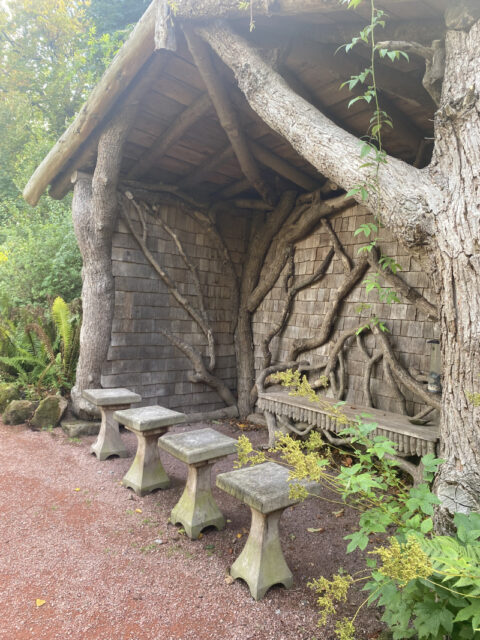
On a group tour I joined that morning of Dumfries House’s grounds (along with American fashion designer Jeff Garner and TV show This Morning’s resident baker Juliet Sear), our guide introduced us to its “star” Tamworth pig called Hilda, who has featured in Vogue and Countryfile and “cooked with Raymond Blanc”. She is housed in a bespoke slate-shingled and thatched-roof structure that more closely resembles a swimming pool cabana than a pigsty.
The current crop of building crafts students have recently returned from placements at some of the country’s most renowned heritage sites.
Stephen, 47, a former special needs teacher who suffered “burnout” two years ago and retrained as a stonemason, was sent to the Tower of London for his. Within a fortnight, he had been offered a job there when he finishes the course, which underlines how in-demand his niche skills are.
“People were investing their time to help me, which was really kind… it makes me feel as though I’m in the right place,” he says.
Their course includes a business skills week in which students meet a solicitor, an accountant and a surveyor to build up their business acumen. Some past students have carved decorative stones to thank the King for providing their fully funded courses (each gets a £1,500-a-month bursary for living expenses too). The stones now form part of a “wall of gifts” in His Majesty’s stumpery.
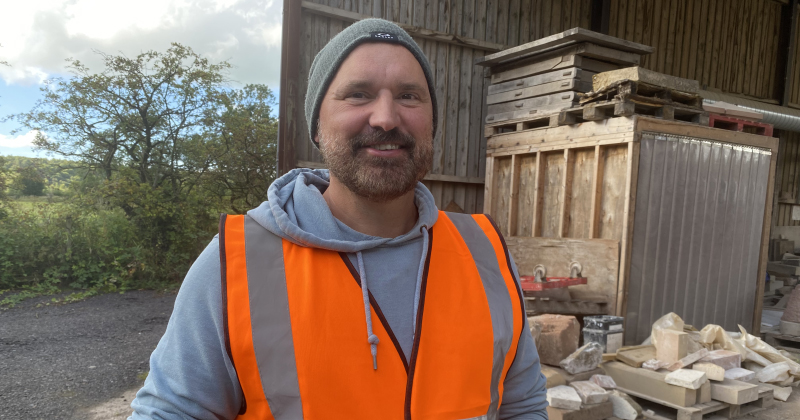
A new chapter
Such architectural gems are reaping financial rewards for the foundation by drawing in tourists. In the year to March 2024, its trading income exceeded donations for the first time, boosting overall income 12 per cent to £26.1 million.
A farming and rural skills training centre opened last year at Dumfries House, and the foundation is also expanding overseas. Offshoots of its School of Traditional Arts operate as far afield as Qatar, Saudi Arabia and China, while the King’s Foundation Australia is restoring a derelict estate in New South Wales to train locals in heritage crafts, modelled on Dumfries House.
But the charity has not been immune from scandal. In January, the Scottish Charity Regulator found that Michael Fawcett, the former chief executive of what was then the Prince’s Foundation, had made unauthorised payments, and that governance failed to meet standards. Procedures have since been overhauled.
The foundation is determined to turn a new leaf and is becoming more vocal about its core ‘harmony’ mission. In July, indigenous tribesmen and craftspeople from across the world were invited to an inaugural Harmony Summit the King held at Highgrove House. And Amazon is putting the finishing touches on a documentary about his harmony ideals, including how they can be implemented in education.
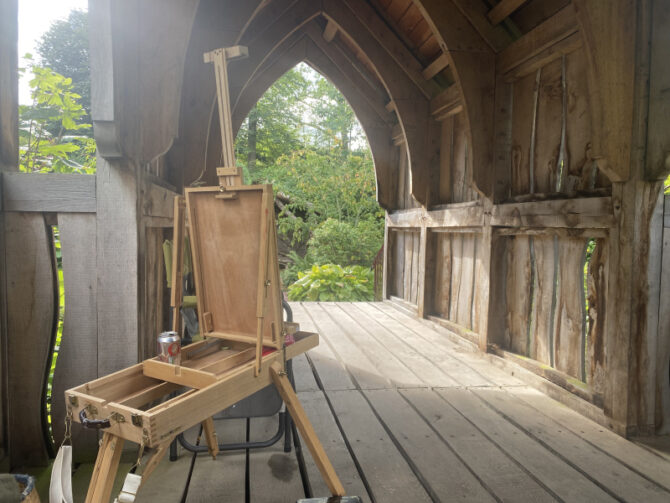
Sustainability focus
The emphasis on harmony means learners are made familiar with the entire lifecycle of the materials they work with.
Nick Wright, manager of the foundation’s Snowdon School of Furniture (Lord Snowdon is the foundation’s vice president), explains how before working on timber, his students are first taken for a tour of the arboretum to learn “which trees are good for timber and what diseases they have to contend with,” then to a sawmill to “think about how the wood is cut and how much waste there is”. “Nowhere else really does that, it’s quite a unique programme,” he adds.
Similarly, each year 3,000 schoolchildren go through a “farm to fork” programme developed in partnership with chef Jamie Oliver and farmer Jimmy Doherty. They sow seeds in Dumfries House’s education garden, return to harvest the vegetables and then prepare healthy meals, helping “fill the huge knowledge gap among kids of where their food comes from,” says Schweitzer-Thompson.
The foundation’s adult learners tend to stay in accommodation on the estate where their course is taught, fostering a community of makers who bounce ideas off each other and use the picturesque grounds as inspiration. One Highgrove furniture maker recently made a wooden hat block for a milliner – reviving another endangered craft, as such blocks are now “very hard to come across,” says education director Daniel McAuliffe.
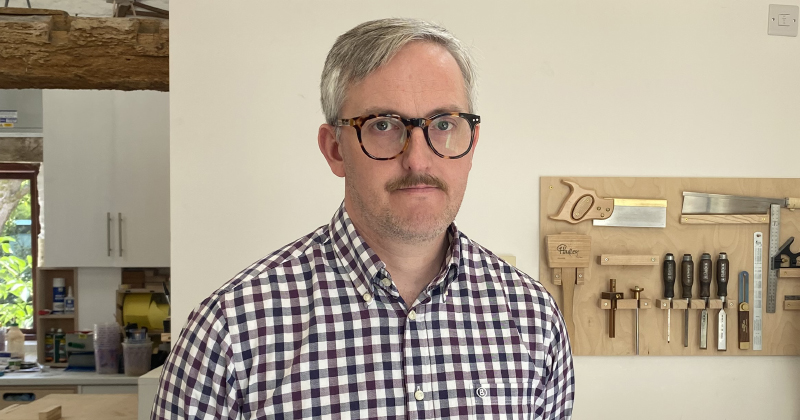
A model to replicate
In an old sawmill now converted into a textile training centre, a “first of its kind in the UK” course is starting in conjunction with Amazon MGM Studios in movie and TV costume crafts. Fifty-nine applications have been received for six places to work on Amazon’s historic and fantasy productions, including Rings of Power.
Unlike standard costume-making courses, this one will put “a huge emphasis” on reducing the waste “that industry is famous for”, Schweitzer-Thompson explains. On the TV, film and magazine shoots that take place on the King’s estates, “90 per cent” of what is used is “discarded” afterwards.
The training is a good example of how the foundation runs courses as “a model for others to replicate… to show them what really can be done if you road test an idea”.
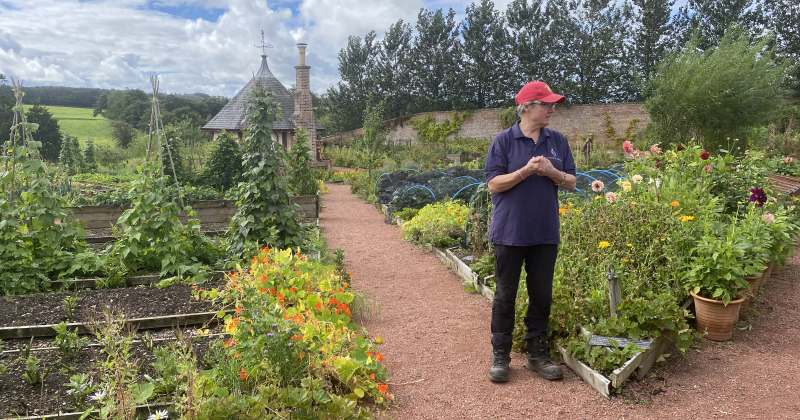
Endangered crafts
The King’s Foundation has taught some of the niche skills on the Heritage Craft Association’s ‘endangered’ list, meaning that without its support they could die out. One is pargeting, a decorative plastering technique from East Anglia that has only six practitioners left. Another is traditional kilt making, taught by a villager near Dumfries House. Schweitzer-Thompson bemoans that most kilts sold on the Royal Mile in Edinburgh are mass-produced in China.
Alas, some skills like hand-stitched cricket ball making and mouth-blown sheet glass production have already died out. Plans are afoot to create a new heritage crafts centre at Dumfries House to ensure more can survive.
Saving such skills is dear to the King’s heart. At a foundation event he remarked that some “timeless skills, which are always needed really, whatever age we’re in”, were “all rather disappearing. The battle is trying to keep all the special ones”.
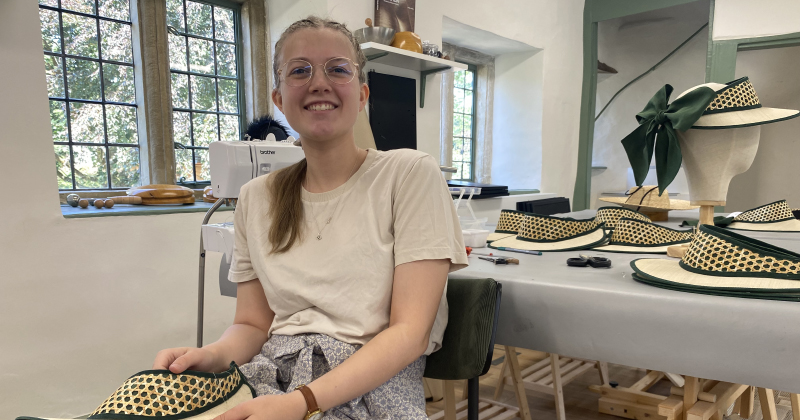
Hat-trick for the King
Millinery used to be big business in the UK, particularly in Luton, where over 70 million hats a year were produced. Now Highgrove is the only place still teaching straw hat-making. The programme started last year is one of two the foundation runs with Chanel, which provides discarded stock for students to revive.
The milliners use rare century-old sewing machines to plait straw into hats. One student, Sophie, who handmakes biodegradable sequins for her hats, is working on costumes for a new Disney+ series. Communications director Izzy Stephenson reveals King Charles “always makes a point of coming to meet the students” on heritage craft programmes; the recent crop of milliners met him four times.
Emily, a recent graduate, spoke to the King about the challenge of sourcing the heritage straw they need. He offered to grow it on spare land at Sandringham. Next year will see the first harvest of Sandringham wheat, to be used for breadmaking, thatching and straw hats, which will then be sold at Highgrove House.
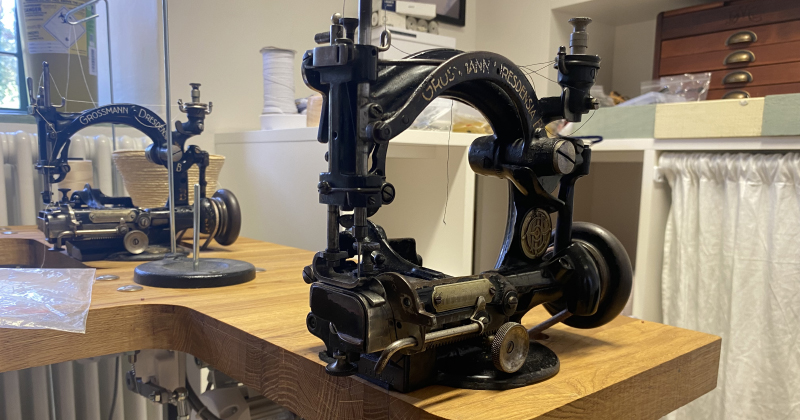
Reviving building crafts
Foundation student Tobias has been busy reviving traditions of a different kind. Before starting his programme at Dumfries House, he travelled across France and Germany for seven months as a wandering journeyman apprentice stonemason. It is a medieval custom still practised in parts of Europe. He ventured from town to town with other journeymen in traditional clothes, taking ad-hoc work and visiting colleges, and believes he benefited greatly.
“You’re learning more of your craft, but you’re also seeing other cultures,” he says.
His teacher, Charles, was taught stonemasonry by masons from Portland in Dorset, a county once famous for stonemasonry, at courses at Weymouth College. It no longer provides them, which Charles believes is a “great shame”. “There was this great heritage there, and that’s gone and won’t come back.”
The foundation also offers a fine art foundation course in London, but McAuliffe says it is “battling against the culture of all the FE courses in fine and applied arts closing down”.
“It’s the thing that the King’s Foundation often does – when other people close things down, we open them up because we see the need,” adds McAuliffe. “The creative industry is huge.”
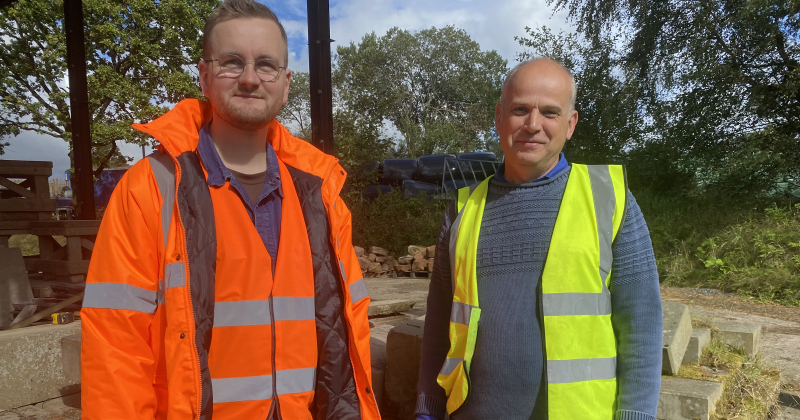
Lack of assessment
The building crafts course runs alongside an NVQ, depending on specialism, but “it’s not really about the qualification”, says Charles. What matters is what students learn and who they meet. He claims their completion rate is an enviable 99.9 per cent.
The lack of assessment makes the King’s Foundation’s programmes unusual in an era when assessment is so central in FE. McAuliffe believes not getting “bogged down by assessment criteria” makes it a “fascinating place to work if you’re interested in education”.
“No one fails” on its courses, because “it’s just not possible – if they don’t perform, they’re asked to leave”, but that rarely happens. The bursary puts “an expectation on the student”, and also “breaks down barriers” for those from disadvantaged backgrounds, who McAuliffe estimates make up around half of each cohort.
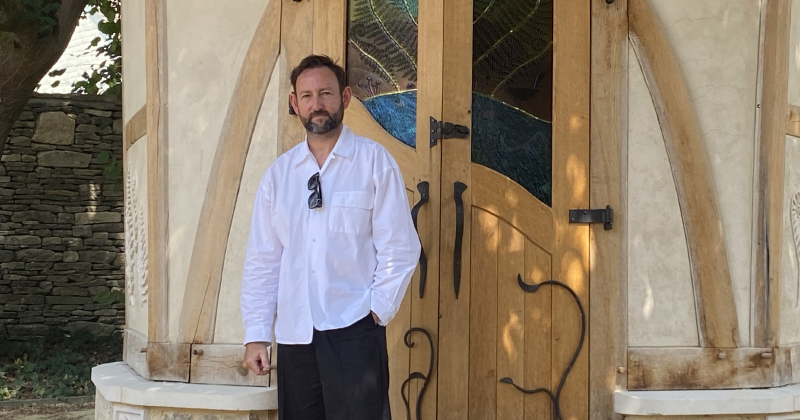
The future
Nobody is sure whether Prince William will continue his father’s legacy and take over the King’s Foundation when he becomes monarch, although the charity would be able to stand on its own two feet if he chooses not to.
But what of the wider prospects for the heritage skills it teaches? McAuliffe believes there is a “shift” happening in society that could spell a golden age for heritage crafts, with people “understanding that luxury isn’t a pair of expensive plastic sunglasses with a logo on, but a hand-plated beaded hat that took 54 hours to make”.
Similarly, Schweitzer-Thompson points out that none of the skills taught can ever be replaced by AI, so they will “stand the test of time”.
“Maybe when everyone else has had to adapt their curriculums and totally rethink their education programmes, we might be the last one standing, still doing what we did 10 years previously.”
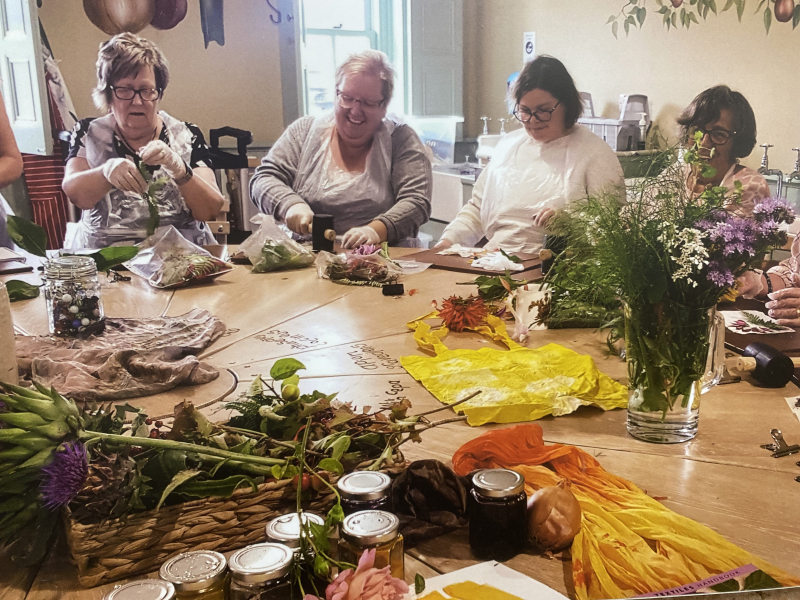
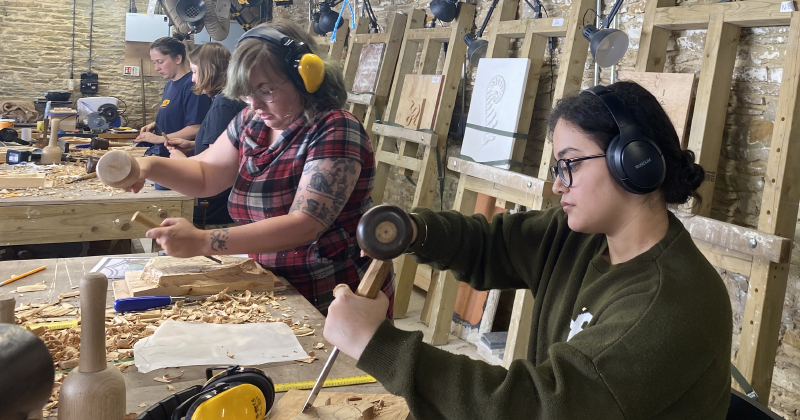


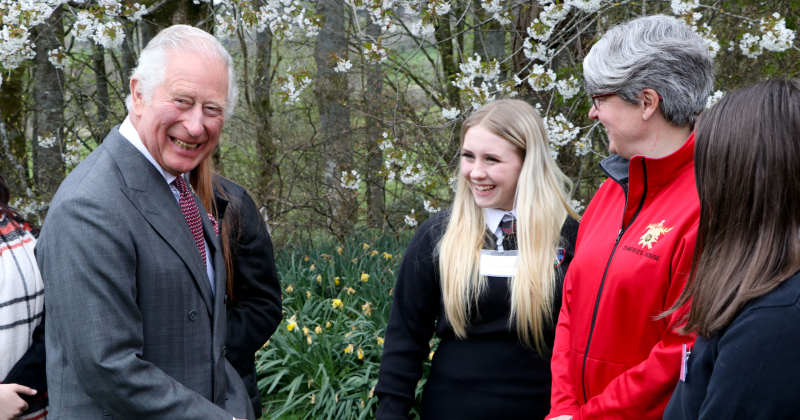







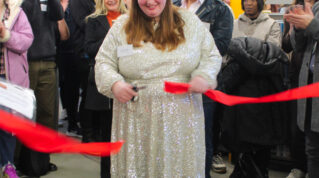




Your thoughts